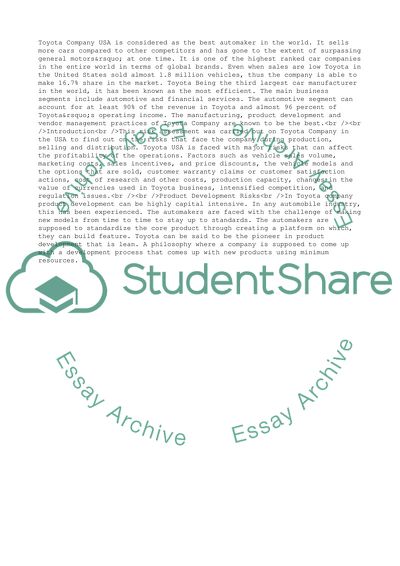Cite this document
(Risk Assessment of Toyota USA Case Study Example | Topics and Well Written Essays - 3000 words, n.d.)
Risk Assessment of Toyota USA Case Study Example | Topics and Well Written Essays - 3000 words. https://studentshare.org/business/1664334-risk-assessment-report-on-an-organization-toyota-usa
Risk Assessment of Toyota USA Case Study Example | Topics and Well Written Essays - 3000 words. https://studentshare.org/business/1664334-risk-assessment-report-on-an-organization-toyota-usa
(Risk Assessment of Toyota USA Case Study Example | Topics and Well Written Essays - 3000 Words)
Risk Assessment of Toyota USA Case Study Example | Topics and Well Written Essays - 3000 Words. https://studentshare.org/business/1664334-risk-assessment-report-on-an-organization-toyota-usa.
Risk Assessment of Toyota USA Case Study Example | Topics and Well Written Essays - 3000 Words. https://studentshare.org/business/1664334-risk-assessment-report-on-an-organization-toyota-usa.
“Risk Assessment of Toyota USA Case Study Example | Topics and Well Written Essays - 3000 Words”. https://studentshare.org/business/1664334-risk-assessment-report-on-an-organization-toyota-usa.


